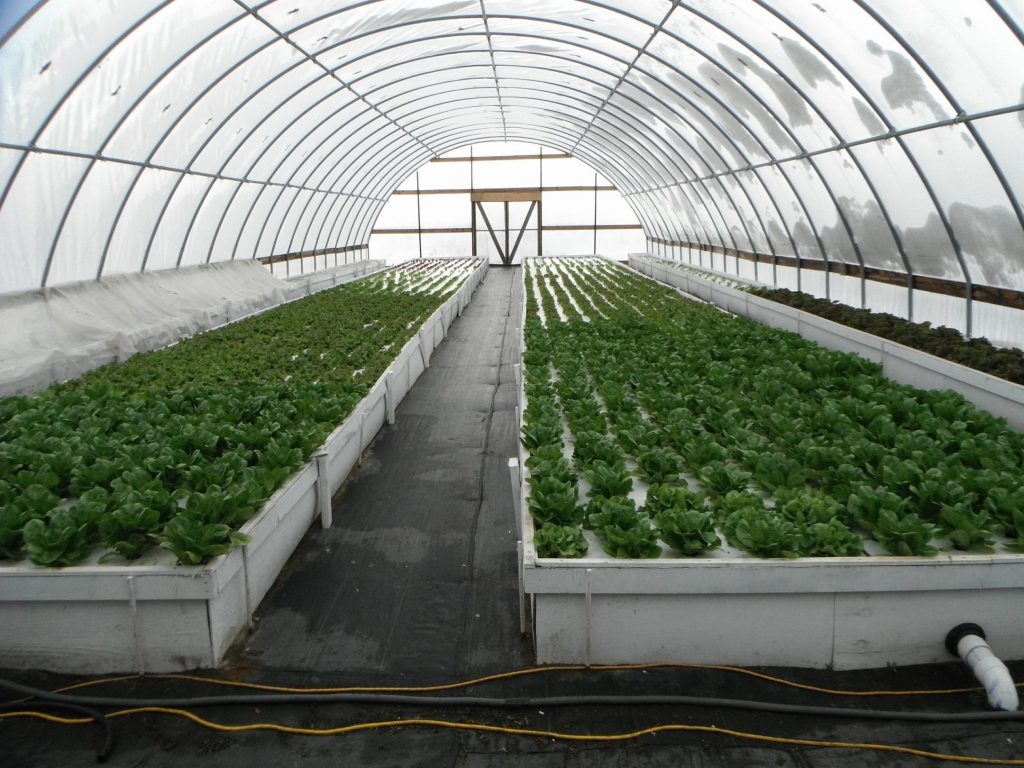How Do Greenhouses Work? Part 3
First, ask yourself: Is There Any Greenhouse Production In My Area?
There’s an easy way to tell if aquaponics can be profitable in your climate. Look around and see if there are any flourishing businesses that grow in hothouses or greenhouses; especially if they are hydroponics businesses. Even if they shut down during the wintertime, or just during the worst couple months of the wintertime, this is an indication that you’re on the right track.
(Below) Cold, but not too cold for profitable wintertime aquaponic growing! 
If you find others growing in greenhouses in your area, then you can be sure aquaponics will be profitable. This is because you have the following advantages over either hydroponics or vegetables grown in the ground inside greenhouses:
- Your produce is certifiable organic and can command much higher prices than conventionally or hydroponically-grown, chemically-fertilized and sprayed produce, sometimes as much as double.2. The vegetables grow in about half the time, in about one-fifth the space they take up in the dirt, thus utilizing greenhouse space WAY more cost-effectively than plants grown in a soil-type medium.
- Organic aquaponics systems are incredibly stable and disease-resistant compared to hydroponics, and do not require any of the maintenance that hydroponics does. They NEVER require draining or sterilization (we have large commercial systems that have been in constant use for nine years that have never been drained nor sterilized; they are self-contained, balanced aquatic ecosystems inside man-made containers).However, if there are few to NO greenhouse businesses in your climate and area, that’s a good indication that there are other adverse factors to be concerned with, to identify, and to deal with before making a large investment in greenhouse aquaponics.
Second: How Much Greenhouse Do You Need?
We were following Kevin (one of our students) who had a 128 square foot backyard Micro System of our design installed at 6,000 feet elevation in the mountains in Colorado. He built the system in early Spring, and ran it through the spring, summer, and into the winter.
(Below, no relationship to Kevin’s greenhouse) Our smallest Chinese-style greenhouse design, with the center aisle widened to be ADA-compliant. This was so the owner could have classes of schoolchildren through on tours, to introduce them to aquaponics.
Kevin had a 200 watt aquarium heater in the fish tank, and 2 inches of foam insulation under his troughs and fish tank, inside a single layer of greenhouse poly over a cheap PVC pipe hoop house. It was all he could afford at the time, but he did it because it would give him at least one season of aquaponic growing experience.
We thought this was a good plan given his finances; because the experience is the most important thing you can have going into a commercial aquaponics project.
Both he and I were certain that everything would freeze solid at some point as he headed into the winter, and that he would just clean it out and start his system over in the spring. We had hilarious mental images of him with an ax, chipping the tilapia out of the fish tank ice block to put them in his freezer!
It didn’t work out that way: he had a minus 18 degree night in early December, and came outside the next morning to find everything was fine. He’d lost his tomato and bean plants because they were so tall that they froze, but everything under 2 feet tall was just fine, as well as the fish. His water temperature was 70 degrees!
This was a pleasant bit of feedback on how the huge thermal mass of the water in the aquaponics system stabilized winter conditions to allow use of a very cheap and minimal greenhouse, and showed us how important insulation is in extreme conditions (insulation, not heat!). Kevin’s system had approximately 4 tons of water in it; that’s a LOT of thermal mass!
Leave a Reply